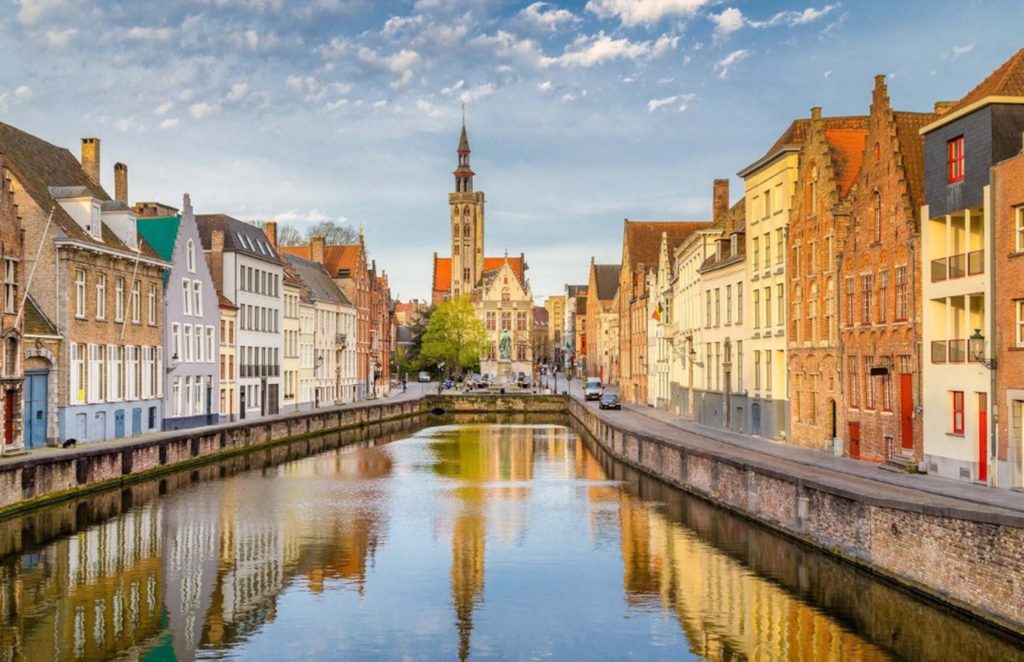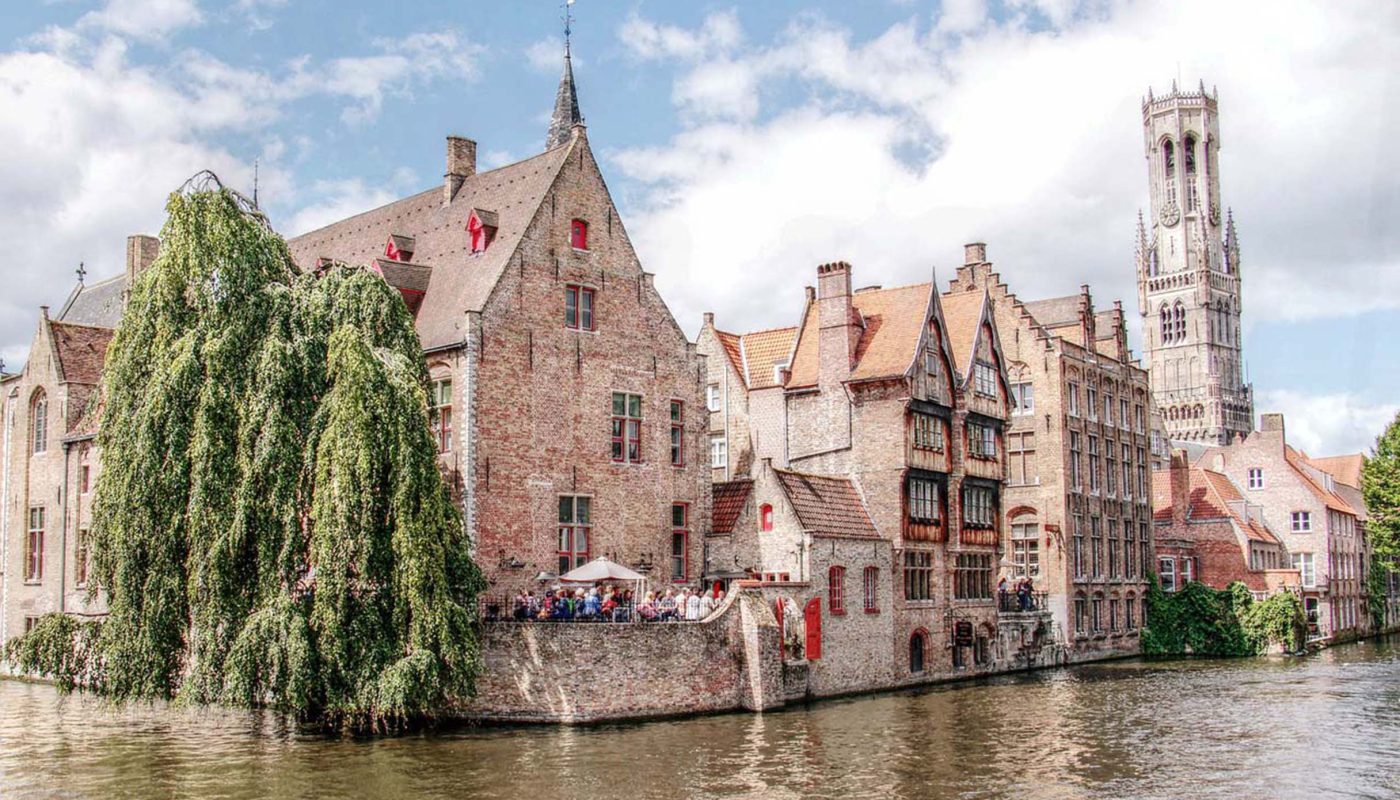Situated gracefully in the heart of Belgium, Bruges beckons travelers with its impeccably preserved medieval architecture, meandering canals, and charming cobblestone pathways.
Give Your Tech a Second Life
Give your devices a second life with Gazelle.com
Sell your old tech or buy certified pre-owned phones and laptops — saving money while reducing e-waste.
Smart for you. Good for the planet.
How to Get There:
Embarking on a journey to Bruges is an effortless endeavor, thanks to the city’s seamless connectivity through an extensive train network that intricately connects it to prominent urban hubs like Brussels and Ghent. As I alighted at the Bruges railway station, a gateway to this historical treasure trove, the allure of the city unfurled before me like a vibrant tapestry waiting to be explored.
Stepping onto the platform, I found myself enveloped in an atmosphere of anticipation, with the promise of adventure lingering in the air. The city’s center beckoned, a labyrinth of cobblestone streets and ancient pathways, eagerly awaiting my discovery. Here, transportation options abound, offering me the freedom to chart my course through Bruges’ enchanting streetscapes.
Venturing forth, I found myself presented with a myriad of choices to traverse the city’s picturesque expanse. Whether by foot, allowing for intimate encounters with every cobblestone and quaint storefront, or by bicycle, offering a swift and exhilarating means of exploration, the avenues for discovery seemed endless. Conveniently, rental facilities dotted throughout the city ensured that obtaining a bicycle was a matter of mere moments, granting me the freedom to pedal my way through Bruges’ timeless charm at my leisure.
With each step and every turn of the wheel, Bruges revealed itself as a realm ripe for exploration, beckoning travelers like myself to immerse in its rich history and architectural splendor. From the moment I set foot in the city center, to the winding alleys and serene canals beyond, the journey to Bruges proved to be not just a passage of distance, but a gateway to a world where every corner held the promise of discovery and wonder.

Discovering Architectural Marvels:
Stepping onto the cobblestone streets of Bruges, I felt as though I had been transported back in time, with each footfall echoing the footsteps of generations past. The city’s architectural tableau unfolded before me like pages from a historical tome, seamlessly blending Gothic spires, Renaissance facades, and Baroque flourishes into a tapestry of unparalleled beauty.
As I meandered through the Markt, Bruges’ bustling central square, I was greeted by the imposing presence of the Belfry of Bruges, its towering silhouette piercing the sky and casting a watchful eye over the city below. Scaling its ancient steps, I was rewarded with panoramic vistas that stretched as far as the eye could see, offering a bird’s-eye view of Bruges’ architectural splendor.
However, it was upon the tranquil waters of Bruges’ canals that the city’s true enchantment revealed itself. Opting for a leisurely boat tour, I found myself gliding past centuries-old buildings, their weathered facades reflecting in the rippling waters below. From the graceful arches of stone bridges to the ornate gables of guild houses, each vista presented a tableau of architectural marvels that seemed to transcend time itself.
As the boat gently navigated through the labyrinthine waterways, I found myself captivated by the charm of waterside cafes and bustling markets that lined the shores. Here, amidst the gentle lapping of waves and the chatter of passersby, I savored the essence of Bruges – a city where history and modernity converge in perfect harmony.
In this idyllic setting, every corner turned and every bridge crossed revealed a new facet of Bruges’ architectural heritage, each edifice whispering tales of bygone eras and the lives that once thrived within its walls. It was a journey of discovery unlike any other, where the past and present intertwined in a symphony of sights and sounds that left an indelible mark on my soul.
My journey through Bruges led me to a local artisan market, where skilled craftsmen showcased their talents, crafting delicate lace and intricate woodwork. Engaging with these artisans not only provided insight into Bruges’ cultural heritage but also fostered meaningful connections and lasting memories.
Must-Visit Attractions:
Basilica of the Holy Blood:
As I approached the Basilica of the Holy Blood, a sense of reverence washed over me, heralding the sacredness of the site that lay before me. Nestled within the heart of Bruges’ medieval quarter, this hallowed sanctuary beckoned with an aura of solemnity and devotion that transcended time itself.
Stepping through the threshold of the basilica, I was enveloped in a world of ethereal beauty, where sunlight filtered through stained glass windows, casting kaleidoscopic patterns of color upon the ancient stone floor. The air was heavy with the scent of incense, mingling with the soft strains of Gregorian chants that echoed throughout the hallowed halls.
My eyes were drawn to the focal point of the basilica – the reliquary said to contain a precious relic believed to be the blood of Jesus Christ. Encased within a jeweled container, the relic emanated an otherworldly glow, casting a mesmerizing spell upon all who beheld it. It was a moment of profound awe, as I contemplated the significance of this sacred artifact and the centuries of devotion it had inspired.
The architecture of the basilica was a testament to the skill and craftsmanship of generations past, blending elements of Romanesque and Gothic styles into a harmonious whole. Vaulted ceilings soared overhead, adorned with intricate carvings and delicate tracery that seemed to reach towards the heavens themselves. Every arch and column bore the weight of history, each stone imbued with the prayers of countless pilgrims who had come before.

As I lingered within the sanctuary of the basilica, I found myself immersed in a state of contemplation and reverence. Here, amidst the hallowed walls, time seemed to stand still, allowing me to connect with something greater than myself – a sense of transcendence that transcended the boundaries of the physical world.
Leaving the basilica, I carried with me a profound sense of peace and serenity, grateful for the opportunity to experience the sacredness of this holy site. The Basilica of the Holy Blood was not merely a place of worship, but a sanctuary of the soul, where the divine and the human converged in a timeless embrace.
Bruges Beguinage:
Entering the Bruges Beguinage felt like crossing a threshold into a bygone era, where time seemed to slow and tranquility reigned supreme. Designated as a UNESCO World Heritage site, this secluded enclave offered a sanctuary of serenity amidst the bustling cityscape of Bruges.
As I stepped through the arched gateway, I was greeted by a scene of unparalleled beauty – a tranquil courtyard framed by rows of whitewashed houses, their red-tiled roofs basking in the gentle glow of the afternoon sun. Ancient trees arched overhead, their gnarled branches reaching towards the heavens in silent supplication, casting dappled shadows upon the cobblestone pathways below.
The air was infused with a sense of peace and tranquility, broken only by the soft rustle of leaves and the distant chirping of birds. Here, amidst the serene surroundings of the Beguinage, time seemed to stand still, allowing visitors to escape the frenetic pace of modern life and reconnect with the rhythms of nature and the soul.
Wandering through the labyrinthine pathways, I marveled at the architectural beauty that surrounded me – quaint cottages with their charming facades adorned with colorful shutters and blooming window boxes, each dwelling a testament to the simple yet elegant lifestyle of the Beguines. These medieval women, who lived a life of piety and devotion within the confines of the Beguinage, left an indelible mark on the fabric of Bruges’ history, their legacy preserved within these hallowed walls.
Pausing to reflect upon the tranquil beauty of the Beguinage, I felt a profound sense of gratitude for the opportunity to experience this hidden gem nestled within the heart of Bruges. Here, amidst the timeless beauty of the courtyard and the whispered echoes of centuries past, I found solace and renewal, a moment of respite in a world filled with noise and distraction.
Leaving the Beguinage, I carried with me a sense of peace and serenity that would linger long after my departure. The Bruges Beguinage was not merely a place of pilgrimage, but a sanctuary of the soul, where the ancient rhythms of life and faith intertwined in a delicate dance of harmony and grace.
Groeningemuseum:
Entering the hallowed halls of the Groeningemuseum felt like stepping into a treasure trove of artistic wonders, where every brushstroke told a story and every canvas whispered secrets of centuries past. As an avid art aficionado, I found myself spellbound by the masterpieces that adorned the walls of this esteemed institution.
The museum’s collection spanned the breadth of Flemish and Dutch art, from the early Renaissance to the Baroque period, offering a comprehensive glimpse into the rich artistic heritage of the region. Each gallery presented a curated selection of works by renowned masters, their creations spanning genres and styles with effortless grace.
My journey through the Groeningemuseum began with Jan van Eyck’s iconic “Madonna with Canon van der Paele,” a masterpiece of unparalleled beauty and intricacy. The luminous figures seemed to come to life upon the canvas, their ethereal presence captivating the senses and stirring the soul. I found myself drawn into the scene, mesmerized by the artist’s meticulous attention to detail and his ability to capture the essence of human emotion with such exquisite precision.
Moving through the galleries, I encountered Hans Memling’s exquisite altarpieces, each panel a symphony of color and light that transported me to a realm of divine beauty and spiritual contemplation. The delicate brushwork and intricate symbolism spoke volumes of the artist’s skill and mastery, leaving an indelible impression upon my heart and mind.
As I wandered amidst the hallowed halls of the Groeningemuseum, I marveled at the diversity of artistic expression on display – from the serene landscapes of Pieter Bruegel the Elder to the dynamic portraits of Anthony van Dyck, each work a testament to the boundless creativity of the human spirit.
Leaving the museum, I carried with me a profound appreciation for the artistic heritage of the region and a renewed sense of wonder at the power of art to transcend time and space. The Groeningemuseum was not merely a repository of treasures, but a sanctuary of the soul, where the beauty of the past intersected with the present in a timeless dance of inspiration and imagination.
Local Delicacies:
No visit to Bruges is complete without indulging in its culinary delights. I savored delectable Belgian waffles adorned with fresh fruit and whipped cream, sampled decadent chocolates from local chocolatiers, and relished in the flavors of authentic Belgian beer.
Bruges, with its timeless beauty and rich cultural tapestry, left an indelible mark on my soul. Whether meandering through cobblestone streets or gliding along tranquil canals, every moment spent in this medieval marvel felt like a voyage through time.
